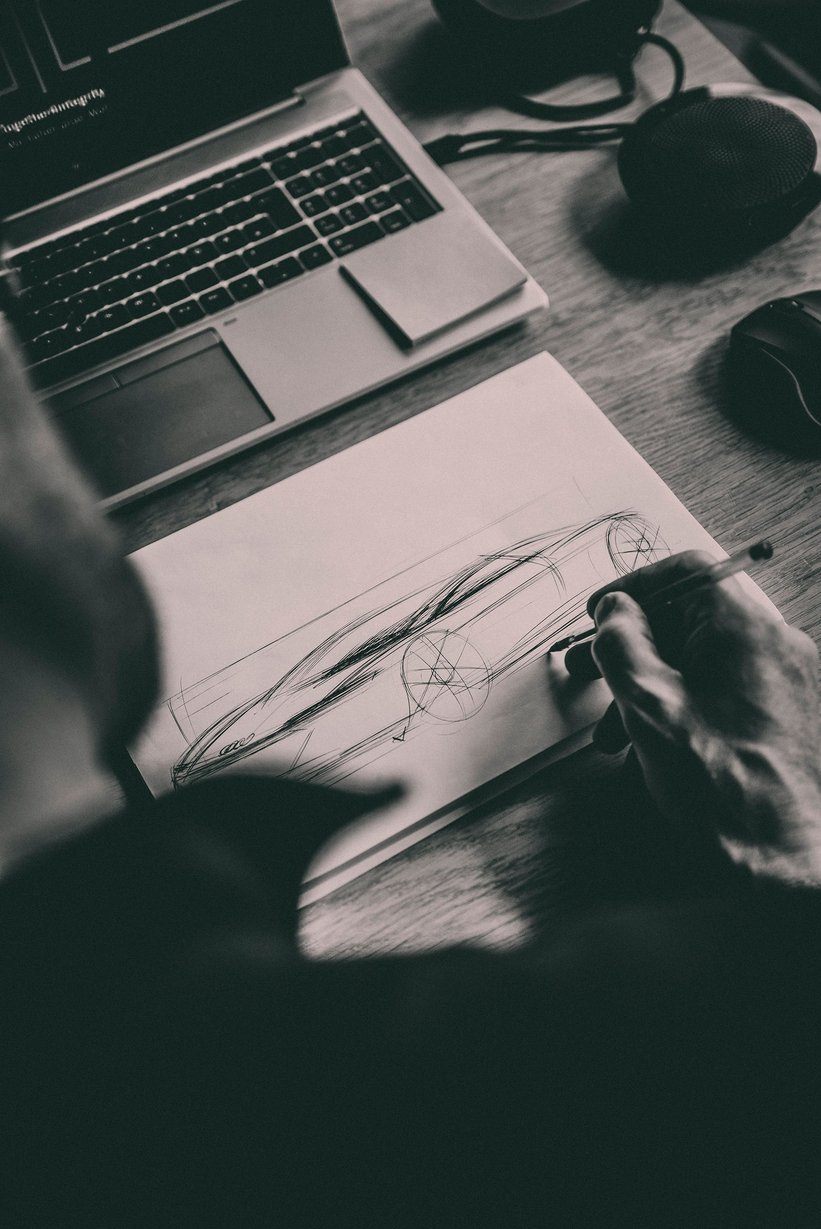

Marc, before we talk about the future of the automobile, let’s take a quick look in the rear-view mirror. Where does your passion for cars come from and how did you become a car designer?
My father drove hill climbs in the 1970s with a Porsche 911 2.7 RS. I was always there, standing at the racetrack and watching him ride up the mountain. That shaped me. At home, I built my dream cars with "Lego Technic" – not according to instructions, but following my own ideas. So, I always knew that I wanted to be a car designer. I couldn't help it!


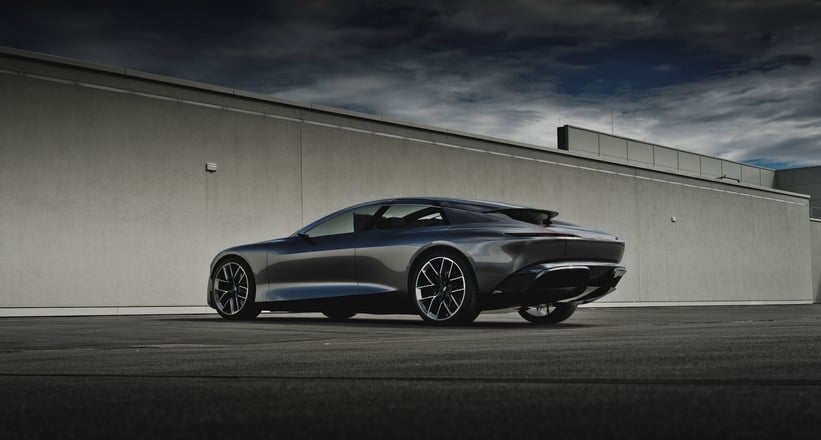
As an automotive designer, you are working in an exciting time: headlines proclaim a change of era, the transition to fully electric, autonomous driving. However, the cars that are on the roads today still look as they always have. How come?
The key word in the question is "today". Because the cars you see on the road now were designed at least five years ago. I've been working at Audi since 2014 when we designed the first Audi e-tron. That was a huge step from a combustion engine to an electric car. At the moment we are very well positioned in both worlds. However, the all-electric and automated cars we are working on today that will hit the road in a few years are radically different from the current models. You could say that we are currently reinventing the automobile.


Sounds exciting! As a designer, how do you manage the transition from one technology to another without breaking with all aesthetic conventions and viewing habits?
As a designer, the electric drive technologies enable me to achieve the proportions I have always dreamed of. So, big wheels and a long wheelbase, short overhangs, and a flat silhouette. The new Audi A6 e-tron and the Q6 e-tron are already benefiting from these proportional advantages. However, as an owner, you continue to drive these cars yourself. Accordingly, human physiology dictates what the interior should look like. The next phase will be really exciting for us designers because if the car is already fully automated and you temporarily hand over the driving task, the previous limits become possibilities. This changes the entire design process by 180 degrees, as we now design cars from the inside out.

So far, the exterior design has been the most important reason for buying an Audi. Will your role as a designer change as the interior becomes more important in the future?
Absolutely. I have designed more than 120 cars in my career – all according to the same principle. First, the engine was chosen, then the platform was picked. Then we considered whether the car should have two seats or four or six and designed a corresponding body. In the end, an interior was inserted. This was already the case with the big coachbuilders such as Pininfarina and Bertone in the 1960s and 1970s and has hardly changed since then – until now!


And that's where the new Audi concept cars come into play, right?
Exactly. To demonstrate the potential of automated driving for car design and to get our customers in the mood for this new technology, we designed three concept vehicles – the Audi skysphere, the Audi grandsphere, and the Audi urbansphere. The skysphere is the all-electric and fully automated reinterpretation of a Horch from the 1930s. Depending on whether the car drives or is driven automatically, the wheelbase changes – from a touring car to a sports car with the dimensions of an Audi RS 5. The Audi grandsphere, however, is the first car that we have really designed from the inside out. At the beginning of the development stood the the use case of Level 4 autonomous driving. We asked ourselves some very basic things: what will the world of the future look like? How does the customer want to use his car? How can he operate it? Only at the very end did we start the development work with the design of the interior. Incidentally, the Audi grandsphere study is not just a dream of the future, but a very concrete teaser for a production car, a new kind of long-distance model.


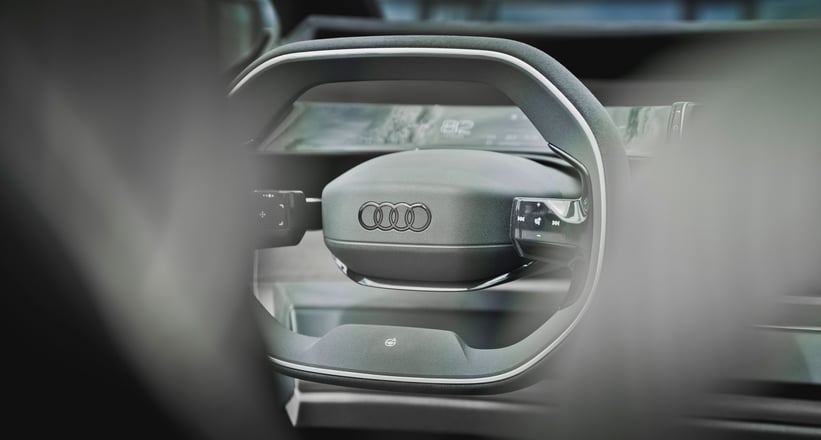
So the good old limousine has had its day?
As it were. In a classic limousine, the passenger sits in the back row while being driven – with a view of a seat backrest and the back of his chauffeur's head. But when technology takes the wheel, I would much prefer to be in the front row. And there I want to sit back, stretch out my feet and enjoy the view. At the moment, however, our operating and safety systems are designed to ensure that the driver is always located behind the steering wheel. With greater freedom of movement, everything must be rethought. For example, the passenger must also be able to operate the car while lying down, and the airbags must be accommodated in the seat. For the automotive industry, this means a radical transformation – similar to the transition from horse-drawn carriages to automobiles. And I would like to play a decisive role in shaping this transformation with Audi.


What does this look like in the interior of the Audi grandsphere?
Since I, as a traveler, do not always have the same seating position, but can move more freely, there is no longer a control panel – you can control the functions of the car instead by eye tracking and voice input. In addition, each occupant has a so-called "MMI Touchless", a beautiful haptic control element for access to the most important functions such as seat adjustment, climate and sound. As a lover of old and purist cars, I am also very happy that we can slowly say goodbye to conventional displays. Instead, we designed a wood application that surrounds the interior like a cocoon. On it, we project the desired content – for example, a film – in high-resolution quality. As a result, the interior remains contemporary for longer than with a display that is outdated after just a few years.

From the outside, the Audi grandsphere looks very classic and elegant.
Thank you, that's a big compliment for me. Because while the concept itself is revolutionary, the exterior can be timeless. The Audi grandsphere is as long as today's Audi A8L, but has a much longer wheelbase and thus a significantly larger interior. This is a difference like moving from the student flat share to your first own apartment! It is made possible by a monobox volume, similar to a van. But from the outside you barely notice that the windscreen starts so far forward, the front end is so short and the interior is so spacious. From the three-quarter rear view, my favourite perspective, the car even looks like a classic grand tourer. We will keep these proportions for the production model.


Compared to many current cars, the design of the Audi grandsphere is very restrained, minimalistic. Mies van der Rohe's pavilion in Barcelona spontaneously came to mind. In classical architecture and design modernism, the work of thought also began with the "use case", with the human proportions and ways of life. This resulted in many classics that we still revere today for their functional simplicity.
Exactly. Like you, I'm at home surrounded by design classics that were designed more than half a century ago – and that I'll take with me to my grave. I firmly believe that good car design should be sustainable and not have to be replaced by something completely new every few years. Why not instead update the electronics, the interior through constant updates? However, this is only possible with a timeless, restrained design.
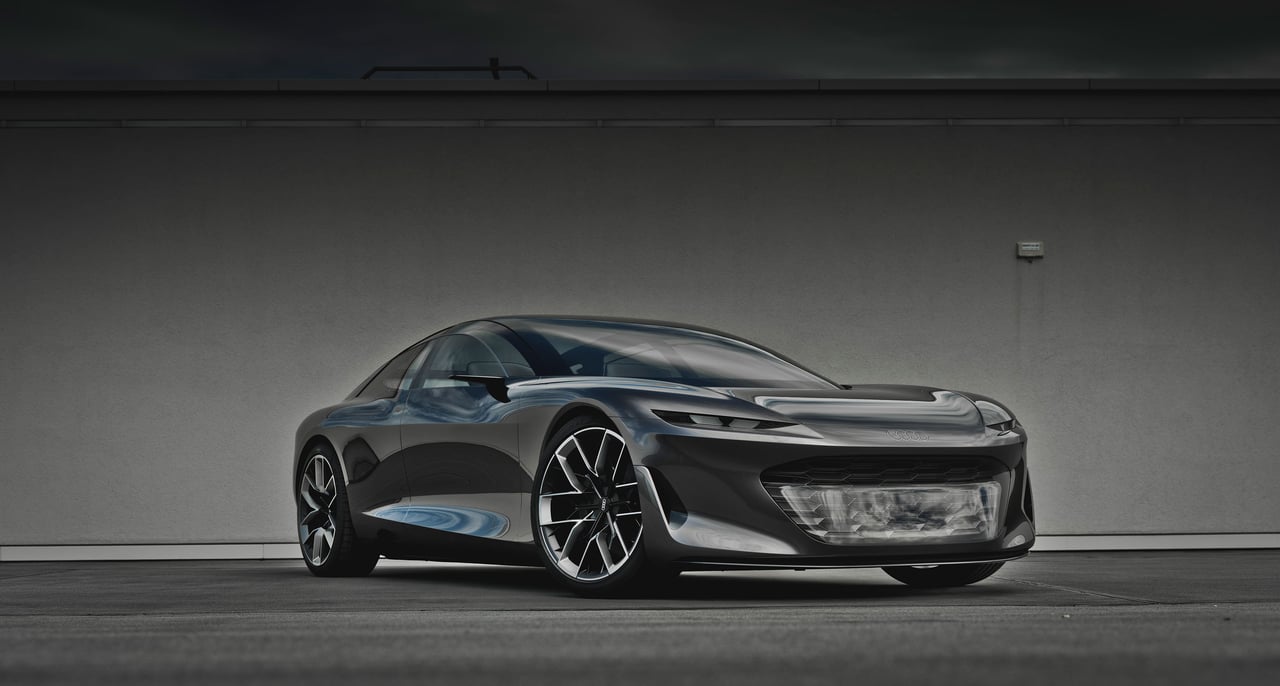
So is the era of overdramatic, aggressively styled car monsters over?
I would say so, yes. We must bear in mind that today's combustion engine architecture does not allow for ideal proportions. So it is concealed with lines, breaks and similar effects. With the first electric cars, many manufacturers also wanted to stand out in order to make the new technologies visible. Now a new phase begins for us car designers, in which we no longer have to conceal anything, but are allowed to work with dream proportions. At the same time, we at Audi want to make cars appear more human and peaceful.
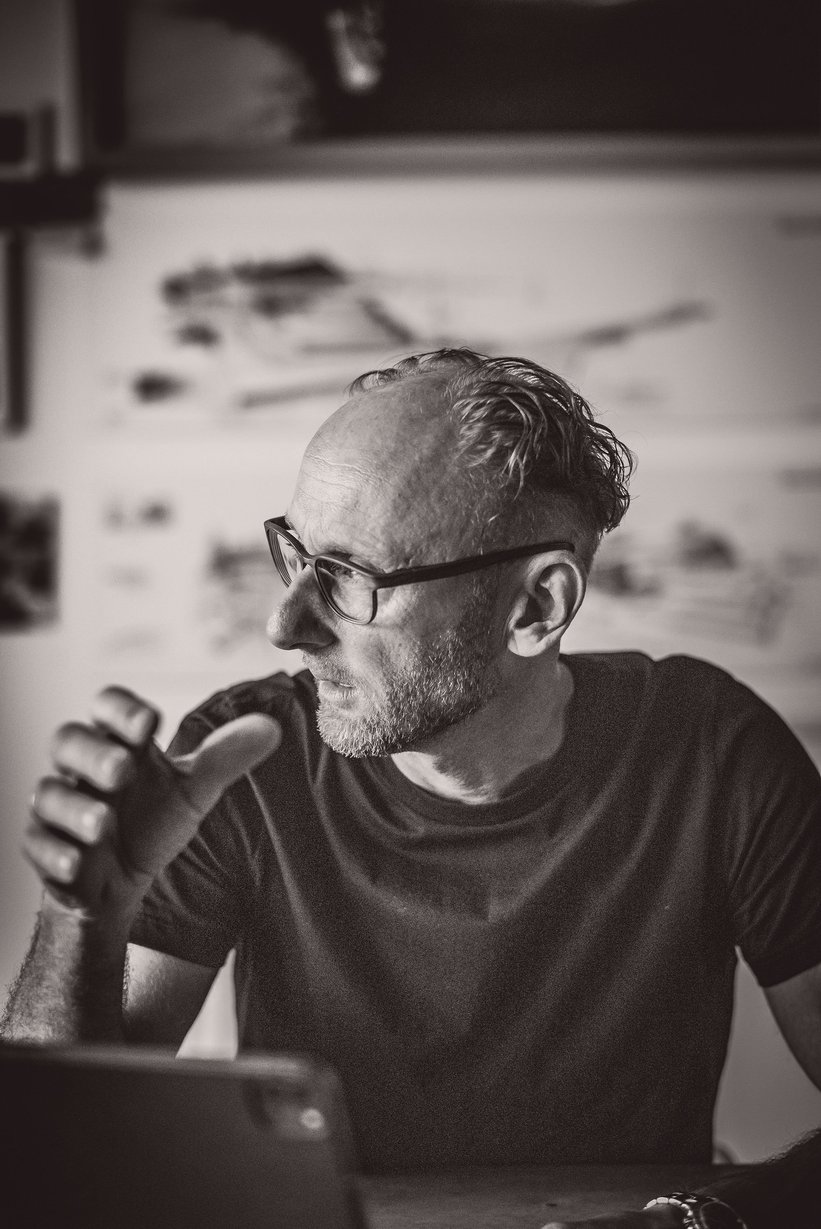

The typical car of our time is the crossover, a jack of all trades made of sports car, off-road vehicle, family car. Will automotive design still have to make so many compromises in the future?
That too will change. When I look seven or eight years into the future, I see smaller portfolios with significantly more sharply positioned models. It always depends on the use case. We are currently working on very different concepts. With every car we build, I want to think, "that's exactly to the point!"
If you could build your personal dream car, what would it be?
For me, the perfect car has a low centre of gravity and two seats. It is agile, aesthetic and timeless. The Audi AI:RACE that we designed a few years ago comes pretty close.

After a day designing the cars of tomorrow, what does your evening look like?
I often get into my old Porsche 911T with only 125 hp, turn down the windows and meet up with friends. Helping to shape the future of the automobile and at the same time enjoying the most beautiful cars of the past – I can't imagine anything better.
Photos: Stefan Bogner of Curves magazine for Classic Driver © 2022

















































